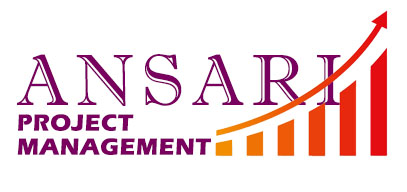1. Why should I read American Architectural History - Volume 4?
Reading this book will allow you to gain a comprehensive understanding of the development and diversity of American architecture during the critical years of 1865 to 1915.
2. How was American architecture affected by historical events during the era of development and the age of diversity?
This book examines various historical events that shaped American architecture in this period; Such as post-colonial independence, economic development, cultural diversity and social changes.
3. What can I learn about American civilization from reading this book?
By delving into architectural developments, you can gain insight into the progress and growth of American civilization during this era.
4. How does this book evaluate the impact of American architecture on the economy?
This book analyzes the relationship between architectural developments and economic growth and shows how architecture played an important role in shaping the country's economy.
5. How has the Persian translation of the book added to its importance?
The Persian translation, which was honored in the biennial book of Iran's Architecture and Urbanism, adds a valuable perspective for readers interested in the effects of cross-cultural architecture.
6. What distinguishes "History of American Architecture - Volume 4" from other volumes in this series?
Volume 4 specifically examines the years 1865 to 1915, known as the Age of Development and the Age of Diversity, and provides a comprehensive analysis of this critical period in American architectural history.
7. How does reading this book help my knowledge of American architectural history?
By reading this book, you will gain an in-depth understanding of the architectural styles, influences, and important architects of this particular time period.
8. What are some of the main architectural challenges faced in the era of development and diversity?
Challenges faced during this period include the incorporation of new materials and technologies, the rapid adaptation of urbanization, and the integration of diverse cultural influences into American architecture.
9. In what ways does this book provide solutions to architectural problems of that time?
This book explores how architects during this era solved creative challenges, such as designing buildings that could adapt to changing needs and developing new construction techniques.
10. What is the benefit of reading this book for people interested in architecture and urban planning in Iran?
By learning from the experiences and developments of American architecture, people in Iran can gain insight and inspiration to further develop their architectural practices.

famous American buildings of the time
11. What social changes affected American architecture during this period?
This book examines social changes such as immigration, urbanization, and the emergence of new industries, all of which had a significant impact on the architectural landscape of that time.
12. How is the study of architecture related to the study of economics?
Architecture is closely related to the economy, and understanding the evolution of architecture in this era can provide insight into how the economy transforms and prospers.
13. What can I learn about sustainable architecture from reading this book?
This book discusses early examples of sustainable architecture in this era and shows how architects embraced environmentally friendly principles even before they became a mainstream concern.
14. What role did government policies play in the formation of American architecture during this period?
This book examines the impact of government policies, including urban planning initiatives, zoning regulations, and the impact of major legislation on the architectural landscape.
15. How does this book inspire creativity in architectural design?
Showcasing innovative architectural designs of the time, this book can spark new ideas and spark creativity among aspiring architects and designers.
16. What can I learn about the impact of technology on American architecture in this course?
This book examines technological advances, such as the use of steel and elevators, and their impact on the construction techniques and design possibilities of the period.
17. How does this book deal with issues related to cultural appropriation in architecture?
This book provides insights into how American architects explored the complexities of combining diverse cultural influences while respecting and appreciating the original contexts of those styles.
18. What effect did changing gender roles have on American architecture during this period?
This book examines how changing gender roles have affected architectural trends, such as the rise of female architects and new considerations for designing domestic spaces.
19. How does learning about the developmental era help better understand modern American architecture?
Studying the developmental era allows you to trace the historical roots and influences that shaped modern American architecture and provide a deeper understanding of its evolution.
20. How does this book challenge the traditional concepts of American architecture?
By showcasing architectural styles and influences that go beyond typical American design, this book can challenge conventional ideas and expand the understanding of what constitutes "American" architecture.
architectural styles and influences that go beyond typical American design
21. What lessons can be learned from the architecture of the era of development and the age of diversity for contemporary urban planning?
This book can provide insights about successful urban planning strategies used in this period, which are valuable lessons for contemporary urban planners and designers.
22. How can reading this book help me develop critical thinking skills?
The analysis of historical events and architectural developments presented in the book can enhance your ability to think critically, evaluate design choices, and understand the context behind architectural decisions.
23. How does this book help preserve the history and heritage of architecture?
By documenting and analyzing the architectural achievements of the era of development and the age of diversity, this book helps to preserve and enhance the historical importance of American architectural heritage.
24. What can I learn about American cultural identity by studying its architecture in this course?
This book explores the architecture of various cultural groups in America and provides insights into the nation's ever-evolving cultural identity.
25. How does this book bridge the gap between architectural theory and practice?
This book provides a bridge between theoretical concepts and their application in architectural practice by examining real examples and practical solutions used by architects in this era.
26. How does this book help my knowledge about architectural conservation and restoration?
This book may include discussions of conservation and restoration efforts for buildings from the Development Era and the Diversity Era, providing insights into best practices and challenges in preserving architectural heritage.
27. How does reading this book encourage interdisciplinary thinking?
Understanding historical events and architectural developments requires paying attention to different fields such as history, art, culture, sociology and urban planning and cultivating interdisciplinary thinking.
28. How does reading this book contribute to a more holistic understanding of American history and culture?
By exploring the architectural developments of the Development Era and the Age of Diversity, you will gain a greater understanding of the interplay between architecture, history, culture, society, and the economy, resulting in a more comprehensive understanding of American history and culture.
29. What examples of iconic American buildings are discussed in the book?
This book covers famous American buildings of the time, such as the Flatiron Building, the Wainwright Building, and the Roby House, and showcases their cultural and architectural significance.
30. How does reading this book increase my understanding of the diversity of architecture?
By examining an era of American architectural diversity, this book highlights the cultural influences and different architectural styles and creates a greater understanding of architectural diversity.
Dear Visitor; Please take a look at the list of 50 most visited websites in the world wide web: YouTube, Facebook, google, translate, gmail, weather, amazon, Instagram, cricbuzz, Hotmail, wordle, satta king, twitter, yahoo, yandex, sarkari result, Netflix, google maps, yahoo mail, roblox, whatsapp, NBA, BBC news, outlook, pinterest, flipkart, eBay, omegle, live score, tiktok, canva, ipl, premier league, hava durumu, ibomma, walmart, twitch, ikea, shein, linkedin, home depot, e devlet, lottery, snaptik, cricket, serie a, nfl, spotify, fox news, amazon prime; There is no book publishing related or project management website in this list. We are working hard to bring these important issues to the center of concentration of societies. Please introduce us via social media, share our website with others and help us to make our world a better place to live. Best Regards.











Write your review